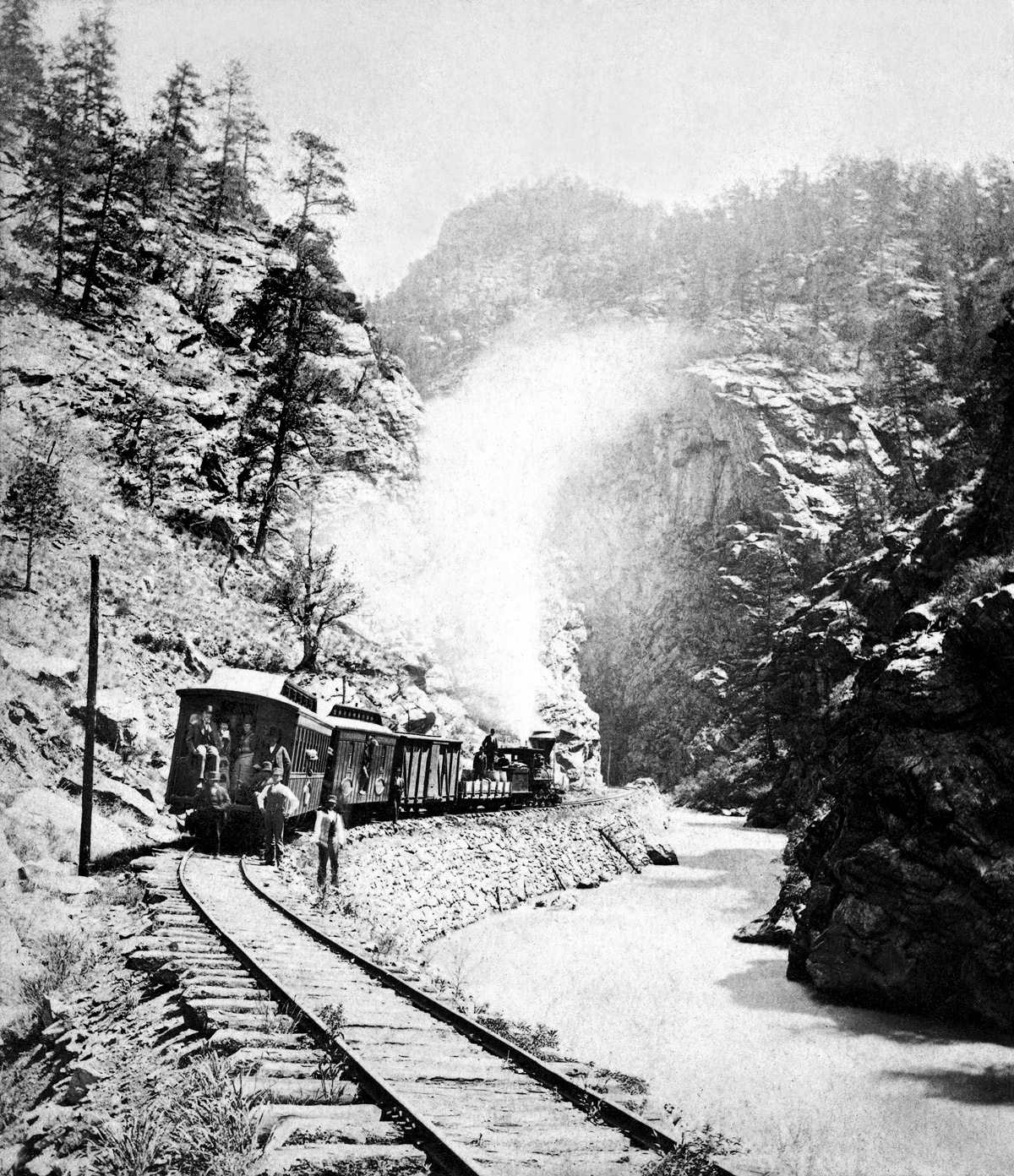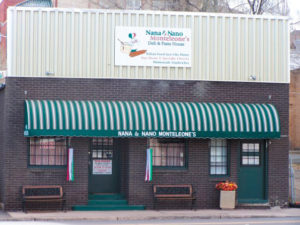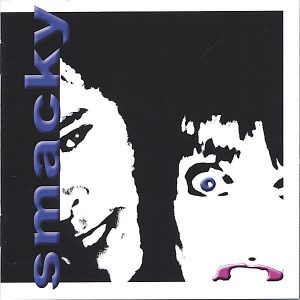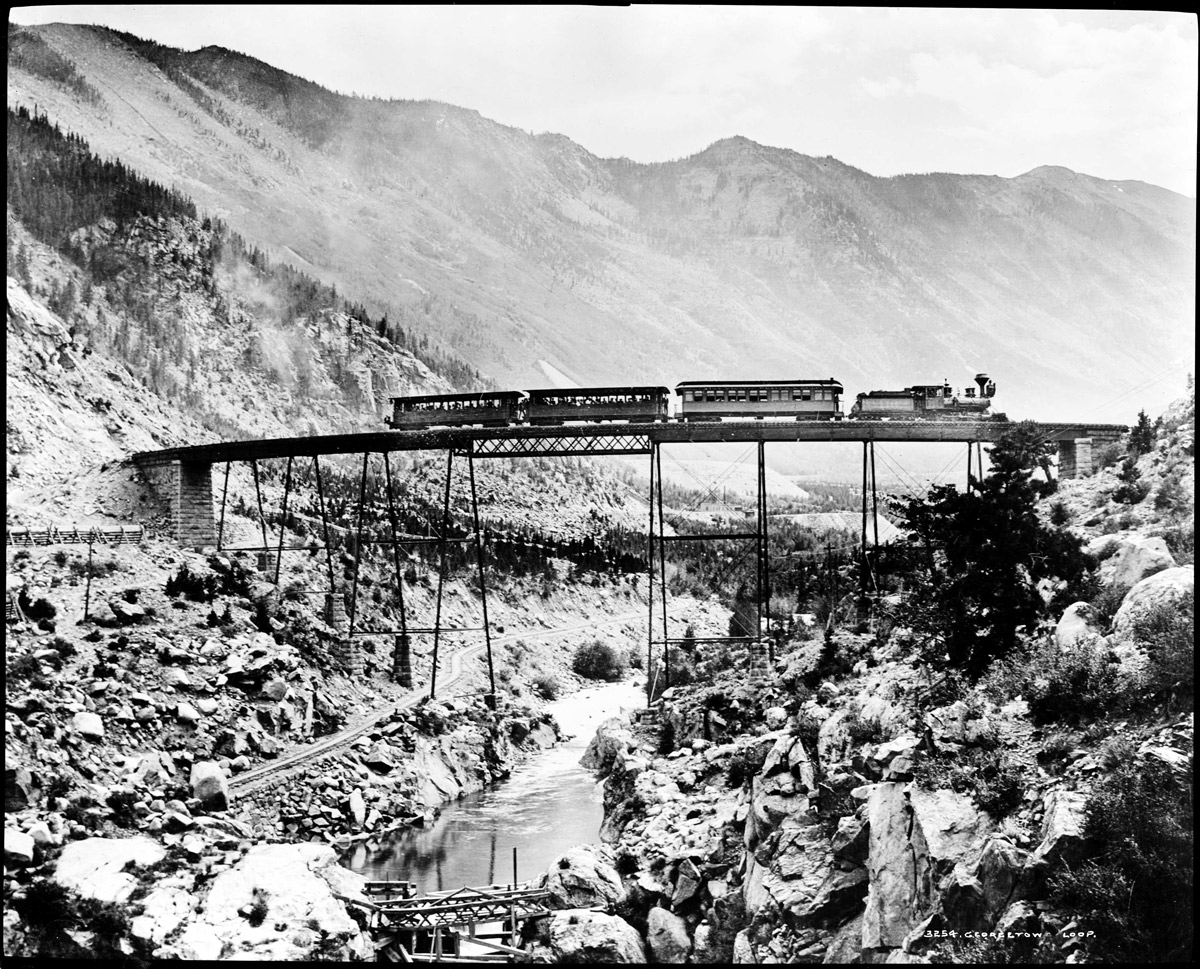
The Colorado Central Railroad had a rocky history. Some of the conflicts around its birth are still echoed in fights over the route of Interstate 70 up the mountains from Golden. The railroad even began with a fight. That was in the 1870s amid a contest between two railroad magnates, Willam A. H. Loveland of Golden and Jay Gould of national reach. That conflict escalated to passionate levels.
Jay Gould wanted to own every railroad in the U.S. and he came close in Colorado. Once he controlled the Denver South Park and Pacific (see its roundhouse at Como), he set his sights on William Loveland and his Colorado Central R.R. That battle in the 1870s had echoes when today’s State Rail Plan was made official only a decade or so ago.
Loveland and his Golden crowd were led by Senator Henry Teller while John Evans, David Moffat and the Denver crowd wanted nothing to take away from Denver’s prestige, certainly not Golden. While they sparred over the route of the Colorado Central, both feared what would happen if Jay Gould took hold of the fate of the new Colorado Territory.
The first link in the Colorado Central R.R. was a standard gauge (4 feet 8 ½ inches) four-mile line from Golden to Denver in 1870. Amid the various re-organizations and money trading one fact remained: Coloradans had a strong desire to keep the Colorado Central a local line. Perhaps that’s why Colorado Central Magazine, a Colorado regional focus magazine, was an obvious choice for this publication.
When we think of the Colorado Central we think of the picturesque line from Golden up Clear Creek reaching Central City on the right branch and Georgetown and Silver Plume on the left. The road did also have a line along the Front Range and an unrelated line in Utah, but the Clear Creek line reaching up to mining riches is what lives on in legend.
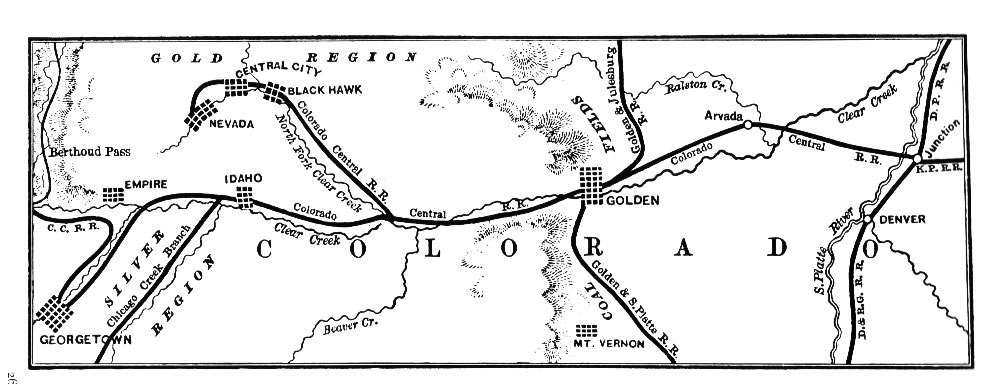
Gilpin County railroad bonds speeded the construction and Loveland himself went all in. In 1872 that line reached the forks where South Clear Creek meets the main stem 13 miles above Golden. It took till 1877 to reach Idaho Springs and 1878 to Central City on the right branch. Passengers marveled at the switchbacks on the steep grade from Black Hawk to Central City. At times they could almost touch the roof tops of Black Hawk just outside their windows.
[InContentAdTwo] Folks did made the trip – twice a day and with an excursion car on weekends. Locals loved the original two small engines called the Punch and Judy (actually the General Sherman and the General Sheridan). While the Central City station wasn’t bad, Black Hawk passengers had to sit in a converted mill amidst the ash and smoke. The doors at each end were opened so the train could pass through. Still, it was better than the old stage line over Guy Hill.
The most exciting part of the trip was the Georgetown loop going from that city up to Silver Plume. The line featured a look straight down into the plunging Bridal Veil falls.
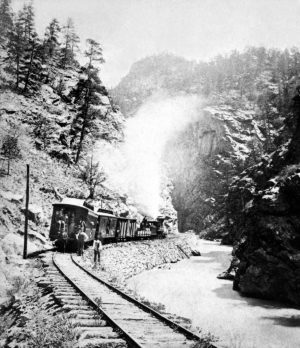 The line above Silver Plume was a controversial challenge then and now. Was the Eisenhower tunnel built in the right place? In any case there it is. Brick Pomeroy, editor of the short-lived Denver paper The Great Divide, had a tunnel vision too. His tunnel wasn’t quite where today’s Eisenhower/Johnson tunnel disgorges I-70, but close enough. Brick even bored a bit of the tunnel to lure investors, that is, until the spring thaw arrived. That thaw revealed that nearly all of his tunnel was actually a snow tunnel. He soon left town for Brooklyn where he continued a newspaper career and remained comfortably wealthy.
The line above Silver Plume was a controversial challenge then and now. Was the Eisenhower tunnel built in the right place? In any case there it is. Brick Pomeroy, editor of the short-lived Denver paper The Great Divide, had a tunnel vision too. His tunnel wasn’t quite where today’s Eisenhower/Johnson tunnel disgorges I-70, but close enough. Brick even bored a bit of the tunnel to lure investors, that is, until the spring thaw arrived. That thaw revealed that nearly all of his tunnel was actually a snow tunnel. He soon left town for Brooklyn where he continued a newspaper career and remained comfortably wealthy.
A dozen years ago a controversy arose over where the state rail plan should lead through the mountains and how much emphasis should be put on a rail alternative to I-70. Even then ski and recreational traffic was intense on the highway. The rail authority had some good statistics to show that a massive investment in rail then could stave off terrible gridlock on I-70 later. That idea never got much traction. Instead, the Colorado Division of Transportation opted for staying with cars and trucks by widening tunnels and tolling parts of I-70.
By 1879 the Union Pacific had all but taken over the Colorado Central. In a way, Jay Gould had won. After 1890 folks continued to call the line the Colorado Central, but ownership bounced around. For a time it was the Union Pacific, then the Colorado Southern. The line kept carrying gold and precious metals out of the mountains in a dwindling stream. In 1925 operations ceased.
[InContentAdTwo] Motorists driving up U.S. 6 beside Clear Creek can still see a few remnants of the cuts made so the rails could be laid. One engine is on display in Central City. The Georgetown loop is a major tourist attraction. The railroad this publication is named for is still very much alive both in legend and on the rails.
Forrest has written about rail in Colorado, Mexico and Central America for twenty years in four or five publications and loves to wile away the night in conversation in the bar car.

